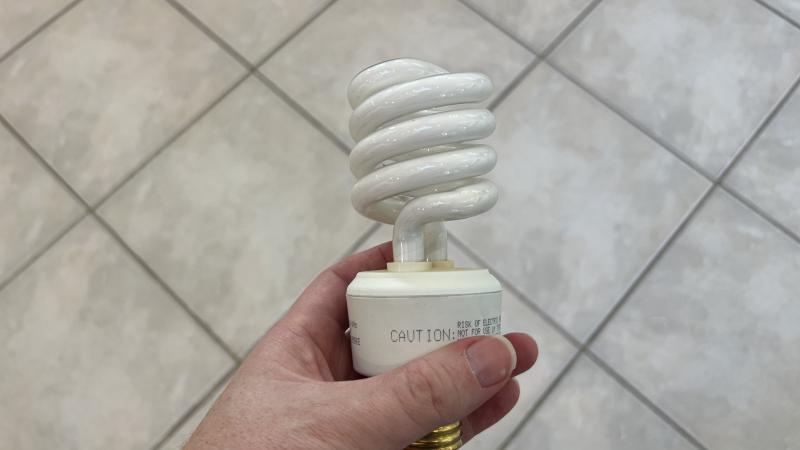As the U.S. electricity supply comes up short, power-hungry industries are looking to go off-grid
When Tesla CEO Elon Musk was building a data center in Tennessee to handle operations for his artificial intelligence platform Grok, he powered it with 18 portable gas-powered turbines, allowing him to get it operational in four months.
Earlier this month, the Federal Energy Regulatory Commission rejected an agreement between a nuclear power plant owner and Amazon to locate a data center next to the plant and satisfy its power needs.
The decision raises the prospect that energy-hungry data centers, as well as other industrial power consumers, may not be able to meet their power demands with the grid. If the grid can’t supply the power, companies might be forced to create their own power plants. Those plants will likely tap natural gas as a fuel source, or eventually employ advanced nuclear reactors in the next decade.
Access denied
In March, Talen Energy, the majority owner of the Susquehanna Steam Electric Station in Pennsylvania, sold a data center campus to Amazon Web Services, the world's largest cloud service provider, for $650 million, according to Utility Dive. Talen intended to sell power to Amazon from Talen’s 2.2 gigawatt stake in the Susquehanna power plant.
The regional grid operator, PJM, filed an amended interconnection service agreement (ISA) for the two companies in order to facilitate selling more power directly to Amazon. Opponents of the plan, according to Nuclear Newswire, raised concerns the deal would threaten grid reliability and increase customer electricity rates. In a 2-1 vote on Nov. 1, FERC commissioners rejected the agreement. Talen argues that FERC erred in its decisions and that the agreement was “just and reasonable.” The company is asking FERC to review the agreement again.
According to the Energy Policy Research Foundation (EPRINC), the number of data centers are growing to facilitate demand for streaming services, smartphones and tablets, security systems such as doorbell cameras, and data-gathering services. The use of artificial intelligence is another driver of the growth in the number of data centers.
Data centers are not, however, distributed across the country. According to EPRINC, they’re gravitating to states that have at least some of the most attractive features for these facilities — affordable commercial real estate, robust network connectivity, infrequent natural disaster occurrences, or low-cost electricity. Virginia, Texas, California and Ohio are at the top of the list.
The EPRINC estimates that 2,602 data centers are operating in the U.S., with another 407 planned or under construction, numbers that will grow over time. The energy demand of these facilities is garnering greater scrutiny on how that could impact a grid that was never designed to handle these rapid increases in loads.
Regular brownouts and blackouts
A new study by the Jack Kemp Foundation, a D.C.-based think tank, estimates that without intervention from policymakers, the energy demands of data centers, electrification and advanced manufacturing could increase the average American household’s electricity bill by 20% to 70% over the next decade. The increased demand could also destabilize the grid.
“The consequences of such a failure could be the appearance of regular brownouts and blackouts in Northern Virginia and across the country,” the study warns.
If regulators make it harder for these operations to tap the grid for their energy needs, they may be forced in increasing numbers to build their own power plants. That’s exactly what Tesla CEO Elon Musk did in Memphis, Tennessee. As reported in The Information, Musk built a supercomputer using 100,000 Nvidia H100 graphics processing units in a little more than four months. Its central focus is Musk’s AI operation, Grok.
The local grid presented too many constraints for Musk’s facility to connect to it, so he built an non-permitted natural gas plant on site. While he wanted for the Tennessee Valley Authority to approve a request for 100 megawatts of power at the site, according to The Information, Musk brought in mobile, natural-gas powered turbines to provide supplemental power in the meantime.
Local environmental groups raised alarm about the facility's power plants, which according to NPR, consists of at least 18 portable gas-powered turbines. Because the county health department regulatates gas generators if they’re in the same location for more than 364 days, the local health department had no jurisdiction over Musk’s power plant. The Environmental Protection Agency told NPR in September it’s “looking into the matter.”
A group of analysts who publish their writings on Substack under the name “Doomberg,” speculate that other data centers may look into Musk’s approach to address their own power needs. “An immediate consequence of such developments would be a surge in demand for gas turbines and associated power equipment, products already in short supply. According to an industry insider we spoke to while researching this piece, the backlog of new turbine orders is ‘already several years, perhaps three to four,’” Doomberg wrote.
Nuclear future: Micro reactors
While natural gas turbines are at the moment the go-to energy source for data centers and other large electricity consumers, advanced nuclear reactors may become competitive and practical in the next 10 or 20 years. Many companies are developing small modular reactors (SMR), which have power outputs of around 20 megawatts to 300 megawatts, and micro reactors which are below that.
Nano Nuclear Energy Inc. is among the companies developing micro reactors. James Walker, CEO of Nano told Just the News that the company saw there were a lot of established players in the SMR space, and they saw a larger market in micro reactors, which catered to energy demands where diesel generators were the primary solution at the moment. This includes military bases, island communities, remote mining projects, oil and gas operations, and disaster relief.
“We actually began with mining projects in mind, because we'd spoken to some of the majors in mining, and you know, they were very transparent that a lot of their projects are not economic based on fuel costs,” Walker said.
The micro reactors are about the size of a shipping container. Unlike diesel generators, they wouldn’t require truckloads of fuel to be shipped in or pipelines to be built, and as an aside, do not produce the same greenhouse gasses as diesel. With a mining project that will last 10 or 15 years, it doesn’t make much sense to build infrastructure that will be stranded after the project is complete, Walker explained.
Breaking point
One of the major business risks of the advanced nuclear reactor industry, Walker said, is the sourcing of fuel. These reactors use high-assay, low-enriched uranium (HALEU). Currently, only Russia and China have the infrastructure to produce HALEU at scale, and the lack of a domestic supply has delayed advanced nuclear reactor projects. Parallel with its development of micro reactors, Nano is developing the manufacturing of HALEU.
Besides the burgeoning data centers, the future return of manufacturing in the U.S. is also creating power demands that the grid might not be equipped to handle. In New York, one semiconductor facility is looking to expand its facility, and chief among its concerns is that its power demands would stretch the grid’s “reliability margins” to the breaking point.
As industries grow, they may find that connecting to the grid is no longer the obvious solution for their power needs. New nuclear technologies could replace natural-gas powered systems for carbon-free energy in the future, something Big Tech in which is very interested. They could become a big part of micro-grid applications where electricity is delivered without dependence on the grid.
The Facts Inside Our Reporter's Notebook
Links
- Susquehanna Steam Electric Station
- according to Utility Dive
- according to Nuclear Newswire
- FERC commissioners rejected the agreement
- review the agreement again
- Energy Policy Research Foundation
- new study by the Jack Kemp Foundation
- reported in The Information
- Grok
- according to NPR
- Doomberg
- Nano Nuclear Energy Inc.
- have the infrastructure
- advanced nuclear reactor projects
- Nano is developing the manufacturing
- power demands would stretch















